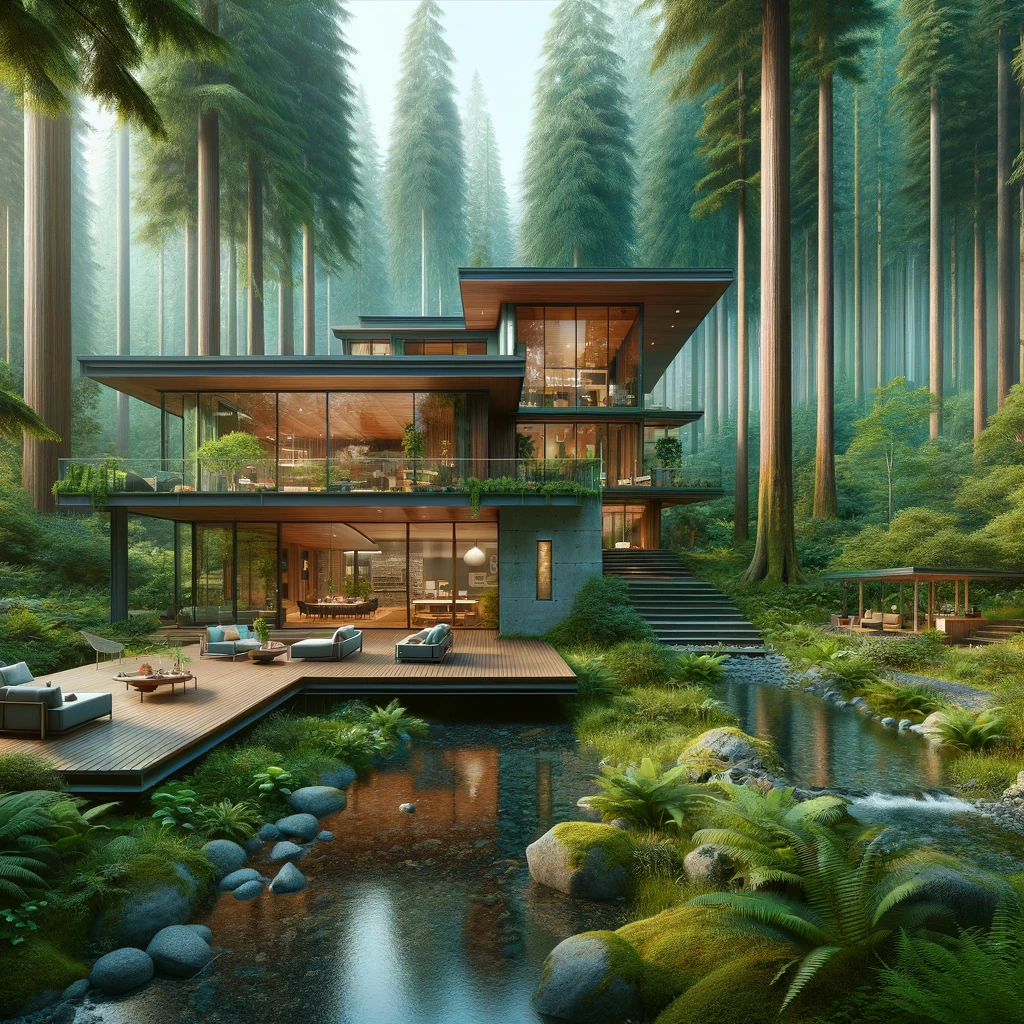Traditional Costa Rican Architecture
Traditional Costa Rican architecture is deeply rooted in the country’s rich cultural heritage and natural surroundings. The design of traditional Costa Rican buildings often incorporates elements such as high-pitched roofs, open verandas, and vibrant colors that reflect the tropical environment. Additionally, these structures are typically built using locally sourced materials like bamboo, adobe, and wood, showcasing the resourcefulness of Costa Rican artisans and builders.
One distinctive feature of traditional Costa Rican architecture is the use of inner courtyards and central patios, which serve as focal points for family gatherings and social events. These communal spaces not only encourage interaction and connection among residents but also allow for natural light and ventilation to flow throughout the home. Moreover, the layout of traditional Costa Rican homes often follows a symmetrical design, with rooms arranged around the central courtyard in a harmonious and balanced manner.
• Inner courtyards and central patios are common features in traditional Costa Rican architecture
• These communal spaces serve as focal points for family gatherings and social events
• Natural light and ventilation flow through the home due to the layout of these inner courtyards
• Traditional Costa Rican homes often follow a symmetrical design, with rooms arranged around the central courtyard in a balanced manner
Incorporating Sustainable Materials
Costa Rican architects are increasingly turning to sustainable materials in their designs to minimize environmental impact and promote eco-friendly practices. By utilizing materials such as locally sourced wood, bamboo, and recycled components, builders are able to create structures that not only blend harmoniously with the natural surroundings but also contribute to the overall well-being of the ecosystem.
The incorporation of sustainable materials in construction not only reduces carbon footprint but also supports the local economy by promoting the use of indigenous resources. This approach not only benefits the environment but also adds a unique character to the architecture, showcasing the rich cultural heritage of Costa Rica while demonstrating a commitment to responsible and ethical building practices.
• Locally sourced wood: By using wood that is harvested sustainably from nearby forests, architects can reduce the need for transportation and support responsible forestry practices.
• Bamboo: Known for its rapid growth and strength, bamboo is a versatile material that can be used in various construction applications such as flooring, walls, and even structural elements.
• Recycled components: Incorporating recycled materials like glass, plastic, or metal into building designs not only reduces waste but also gives new life to discarded items, adding a creative touch to the architecture.
Modern Design Elements
Modern design elements in Costa Rican architecture are increasingly becoming a prominent feature in contemporary buildings. The integration of sleek lines, minimalist aesthetics, and innovative materials showcases a shift towards a more progressive and refined architectural style. This juxtaposition of modern elements against the backdrop of traditional Costa Rican architecture adds a dynamic and eclectic touch to the urban landscape.
Architects and designers are incorporating cutting-edge technology, such as 3D printing and virtual reality, to push the boundaries of traditional construction methods and create unique, avant-garde structures. The use of glass facades, steel beams, and geometric shapes not only enhances the visual appeal of buildings but also emphasizes a commitment to sustainability and energy efficiency. By blending modern design elements with sustainable practices, Costa Rican architects are shaping a new era of architectural innovation that harmoniously merges aesthetics with functionality.
• The integration of sleek lines, minimalist aesthetics, and innovative materials showcases a shift towards a more progressive and refined architectural style.
• Architects and designers are incorporating cutting-edge technology, such as 3D printing and virtual reality, to push the boundaries of traditional construction methods.
• The use of glass facades, steel beams, and geometric shapes emphasizes a commitment to sustainability and energy efficiency.
Rooftop Gardens and Green Spaces
The incorporation of rooftop gardens and green spaces in architecture reflects a growing emphasis on sustainable practices and environmental consciousness. These elevated gardens not only add aesthetic appeal to buildings but also offer numerous benefits such as reducing urban heat island effect, improving air quality, and providing habitats for local wildlife. By utilizing underutilized rooftop areas, architects are able to maximize the use of space while contributing to a greener urban landscape.
Incorporating rooftop gardens and green spaces also promotes a sense of well-being among inhabitants by providing a retreat from the hustle and bustle of city life. These serene spaces offer opportunities for relaxation, recreation, and connecting with nature in an urban setting. As more architects embrace the concept of biophilic design, incorporating vegetation into their building designs becomes an essential element in creating sustainable and harmonious environments.
• Rooftop gardens and green spaces reduce urban heat island effect
• Improves air quality in urban areas
• Provides habitats for local wildlife
• Maximizes use of underutilized rooftop areas
In addition to the environmental benefits, rooftop gardens and green spaces also have a positive impact on the well-being of inhabitants. These serene spaces offer a retreat from city life, providing opportunities for relaxation, recreation, and connecting with nature. As architects incorporate more vegetation into their designs through biophilic design principles, they are not only creating sustainable environments but also promoting a sense of harmony between humans and nature.
Utilizing Natural Light and Ventilation
Natural light and ventilation are essential elements in architectural design that can significantly impact the overall feel and functionality of a space. By strategically placing windows, skylights, and other openings, architects can harness the power of natural light to illuminate interiors and create a sense of openness. This not only reduces the need for artificial lighting during the day but also contributes to the well-being of occupants by connecting them to the external environment.
Additionally, proper ventilation plays a crucial role in maintaining a healthy and comfortable indoor environment. Incorporating features such as operable windows, louvers, and vents allows for the seamless flow of fresh air throughout a building, promoting air circulation and reducing the reliance on mechanical systems. By integrating natural ventilation strategies into design plans, architects can enhance the sustainability of a structure while improving the overall quality of life for those who inhabit it.
• Proper placement of windows and skylights can maximize natural light intake
• Natural light can reduce the need for artificial lighting during the day
• Connecting occupants to the external environment through natural light enhances well-being
• Incorporating operable windows, louvers, and vents promotes air circulation
• Natural ventilation strategies improve sustainability and quality of life in a building
Preserving Cultural Heritage in Contemporary Buildings
Preserving cultural heritage in contemporary buildings is essential to maintaining a connection to the past while moving forward with modern construction practices. Incorporating traditional architectural elements, such as adobe walls or tiled roofs, can help tell the story of a region’s history and cultural identity. By integrating these elements into new structures, architects can pay homage to the past while creating functional spaces for today’s needs.
When designing contemporary buildings with a focus on cultural heritage, architects must strike a balance between tradition and innovation. By incorporating local materials and construction techniques, they can create buildings that resonate with the community and reflect the values of the past. This approach not only helps preserve cultural heritage but also fosters a sense of pride and belonging among residents, creating a lasting legacy for future generations to admire.
• In order to preserve cultural heritage in contemporary buildings, architects can utilize traditional architectural elements such as adobe walls or tiled roofs
• By incorporating these elements into new structures, architects can pay homage to the past while creating functional spaces for modern needs
• Striking a balance between tradition and innovation is key when designing contemporary buildings with a focus on cultural heritage
• Using local materials and construction techniques helps create buildings that resonate with the community and reflect the values of the past
• Preserving cultural heritage in contemporary buildings fosters a sense of pride and belonging among residents, creating a lasting legacy for future generations
Integrating Smart Home Technology
Smart home technology has revolutionized the way we interact with our living spaces. From voice-activated assistants to automated lighting systems, these advancements offer convenience and efficiency like never before. Homeowners can now control various aspects of their homes remotely, enhancing both comfort and security.
Incorporating smart thermostats allows for precise temperature control, optimizing energy usage and reducing utility costs. With the ability to adjust settings through a smartphone app, users can ensure their home is always at the perfect temperature without unnecessary energy consumption. Additionally, smart home security systems provide peace of mind through real-time monitoring and alerts, offering a sense of security whether at home or away.
• Smart home technology has revolutionized the way we interact with our living spaces
• Voice-activated assistants and automated lighting systems offer convenience and efficiency
• Homeowners can control various aspects of their homes remotely for enhanced comfort and security
Incorporating smart thermostats allows for precise temperature control, optimizing energy usage and reducing utility costs. Users can adjust settings through a smartphone app to ensure their home is always at the perfect temperature without unnecessary energy consumption. Additionally, smart home security systems provide peace of mind through real-time monitoring and alerts, offering a sense of security whether at home or away.
Embracing Open Floor Plans
Open floor plans have become increasingly popular in contemporary architecture, fostering a sense of spaciousness and connectivity within a living space. By removing barriers between key areas such as the kitchen, dining, and living room, open floor plans encourage fluid movement and promote social interaction among occupants. This design concept not only enhances the flow of natural light throughout the space but also allows for more flexibility in furniture arrangement and overall functionality.
In addition to creating a modern and visually appealing aesthetic, open floor plans can also contribute to a more sustainable living environment. By optimizing the use of natural light and ventilation, these layouts can reduce the need for artificial lighting and air conditioning, thereby decreasing energy consumption and environmental impact. Furthermore, the seamless integration of indoor and outdoor spaces in open floor plans blurs the boundaries between nature and the built environment, fostering a greater appreciation for the surrounding landscape and promoting a harmonious relationship with the outdoors.
• Open floor plans promote a sense of spaciousness and connectivity within living spaces
• Fluid movement and social interaction are encouraged by removing barriers between key areas
• Enhanced natural light flow and flexibility in furniture arrangement are benefits of open floor plans
• Sustainable living environments can be achieved through optimized use of natural light and ventilation
• Decreased energy consumption and environmental impact can result from open floor plan layouts
• Integration of indoor and outdoor spaces fosters appreciation for surrounding landscape
Blending Indoor and Outdoor Spaces
One distinctive characteristic of Costa Rican architecture is the seamless integration of indoor and outdoor spaces. This design approach blurs the boundaries between the interior and exterior of a building, creating a harmonious connection with nature. From large windows that frame breathtaking views to open-air patios that invite the outdoors in, Costa Rican architects excel in fostering a deep sense of unity with the surrounding environment.
By strategically placing courtyards, gardens, and terraces throughout a property, architects can enhance the living experience by providing residents with various spaces to enjoy the natural beauty of Costa Rica. Whether it’s sipping morning coffee while overlooking lush greenery or hosting dinner parties under the stars, the blending of indoor and outdoor spaces promotes a lifestyle that prioritizes connection to nature. This design philosophy also allows for natural light to flood the living spaces, creating a bright and welcoming atmosphere that is both invigorating and calming.
• One distinctive characteristic of Costa Rican architecture is the seamless integration of indoor and outdoor spaces.
• This design approach blurs the boundaries between the interior and exterior of a building, creating a harmonious connection with nature.
• From large windows that frame breathtaking views to open-air patios that invite the outdoors in, Costa Rican architects excel in fostering a deep sense of unity with the surrounding environment.
By strategically placing courtyards, gardens, and terraces throughout a property:
• Architects can enhance the living experience by providing residents with various spaces to enjoy the natural beauty of Costa Rica.
• Whether it’s sipping morning coffee while overlooking lush greenery or hosting dinner parties under the stars,
the blending of indoor and outdoor spaces promotes a lifestyle that prioritizes connection to nature.
• This design philosophy also allows for natural light to flood the living spaces, creating a bright and welcoming atmosphere that is both invigorating and calming.
Innovative Use of Local Resources
Costa Rica is a country rich in natural resources, and its architecture reflects a deep-rooted connection to the environment. Local materials such as bamboo, adobe, and teak are commonly used in construction, not only for their sustainable attributes but also for their aesthetic appeal. By incorporating these resources into buildings, architects are able to showcase the beauty of Costa Rica’s landscape while reducing the environmental impact of construction projects.
Furthermore, the use of local resources in architecture helps support the local economy and preserves traditional craftsmanship. Artisans who specialize in working with materials like volcanic rock, palm thatch, and clay tiles play a significant role in shaping the unique architectural identity of Costa Rica. By utilizing their expertise and incorporating locally sourced materials, architects are able to create buildings that are not only environmentally friendly, but also culturally meaningful and visually captivating.
• Costa Rica’s architecture reflects a deep connection to the environment
• Local materials such as bamboo, adobe, and teak are commonly used in construction
• These materials are sustainable and aesthetically appealing
• Incorporating local resources showcases the beauty of Costa Rica’s landscape
• It also reduces the environmental impact of construction projects
Furthermore, utilizing local resources in architecture helps support the local economy and preserve traditional craftsmanship. Artisans specializing in volcanic rock, palm thatch, and clay tiles play a significant role in shaping Costa Rica’s architectural identity. By incorporating their expertise and locally sourced materials, architects create environmentally friendly buildings that are culturally meaningful and visually captivating.
What are some examples of traditional Costa Rican architecture incorporated in modern buildings?
Traditional Costa Rican architecture often includes features such as wooden beams, clay tile roofs, and open-air designs that allow for natural ventilation.
How can sustainable materials be incorporated into modern building design?
Sustainable materials such as bamboo, recycled wood, and local stones can be used in construction to reduce environmental impact and promote eco-friendly practices.
What are some modern design elements commonly seen in contemporary Costa Rican buildings?
Modern design elements such as clean lines, minimalist aesthetics, and use of industrial materials like steel and glass are often integrated into Costa Rican architecture.
How can rooftop gardens and green spaces be utilized in building design?
Rooftop gardens and green spaces can provide insulation, improve air quality, and create a natural oasis in urban environments, while also promoting sustainability.
What are the benefits of utilizing natural light and ventilation in building design?
Utilizing natural light and ventilation can reduce energy consumption, promote health and well-being, and create a more comfortable living environment for occupants.
How can cultural heritage be preserved in contemporary buildings?
Cultural heritage can be preserved in contemporary buildings through the incorporation of traditional architectural elements, local materials, and design techniques that pay homage to the region’s history and culture.
What is smart home technology and how can it be integrated into building design?
Smart home technology refers to the use of automated systems and devices that can be controlled remotely. It can be integrated into building design to improve energy efficiency, security, and convenience for occupants.
What are the advantages of open floor plans in building design?
Open floor plans create a sense of spaciousness, promote natural light, and encourage social interaction among occupants, making them a popular choice in modern building design.
How can indoor and outdoor spaces be blended in building design?
Indoor and outdoor spaces can be blended through the use of large windows, sliding doors, and outdoor living areas that seamlessly transition between interior and exterior environments.
How can local resources be innovatively used in building design?
Local resources such as wood, stone, and clay can be creatively utilized in building design to showcase the region’s natural beauty, support local economies, and promote sustainable practices.





Join The Discussion